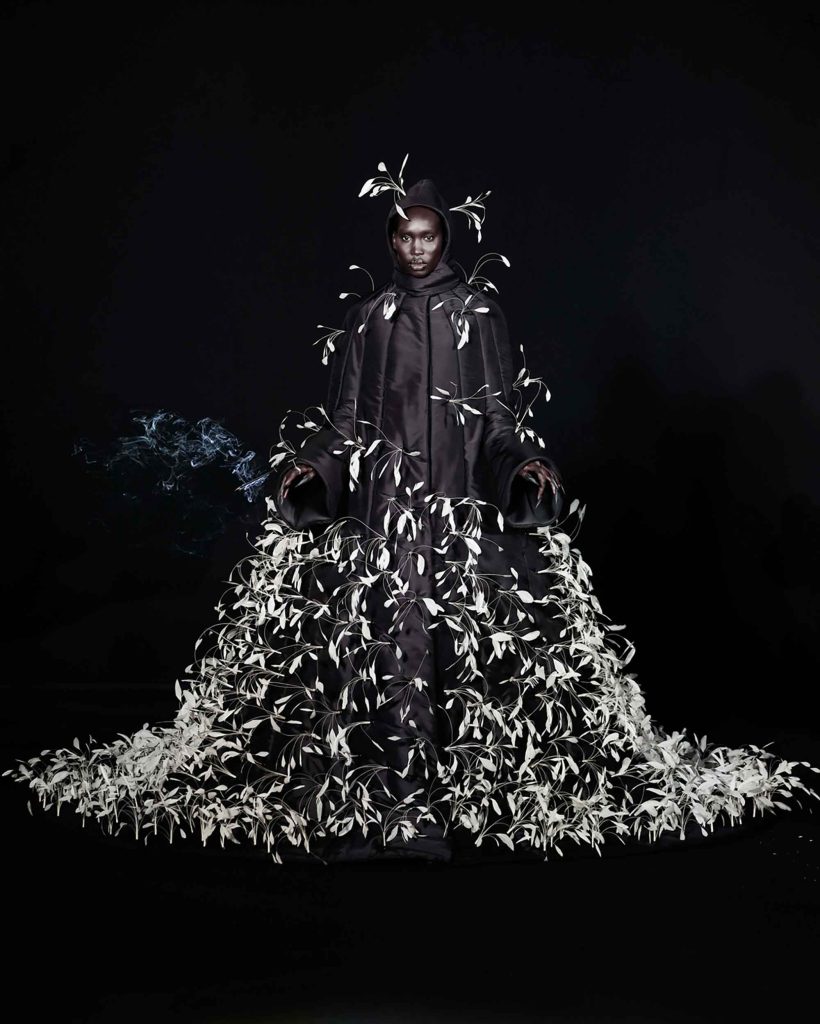
From showcasing his couture chops to taking global red carpets by storm, designer Robert Wun is making 2023 his year. The Hong Kong‑born, London‑based wunderkind has worked his way up the ladder through sheer hard work and his undeniable talent is now—finally—on full display for the world to see. We meet the name on everyone’s lips right now.

GRAZIA Singapore: This year has been huge for you: You entered the Couture Week calendar for the first time and you’re taking over the red carpet! What has the experience been like for you since your couture show in January?
Robert Wun (RW): I feel like a lot of dreams have come true within a very short amount of time—I would never have dreamt that I’d be able to achieve so much in such a short time. It makes me feel very grateful for my team because we started as such a small team when we went into couture and did our first show in January. We’ve grown so much in such a short time. Everyone’s pulling their weight and doing so many things—right after the show, we were doing customs and opening a new kind of business model to couture clients.
Everything we’ve achieved—from Beyoncé [wearing our custom Black Blossom piece on the London leg of her Renaissance World Tour earlier in June this year] to all the red‑carpet moments—was really just possible because my team bit the bullet and worked really hard to make all of this insane stuff happen. So I feel very grateful, like it’s a dream come true. I’m very much looking forward to what we can achieve next.

Tell us more about how you got your start in the fashion industry.
RW: I’ve always been very into nature since I was young—I drew a lot of the sea, life and nature. Then I just got into the idea of identity and clothing when I was a teenager in Hong Kong. I started dressing up and going to charity shops, and I started to cut the garments open and sew them back up all by myself all over again, just to change the shape, or see the way that it was done. I liked that kind of experimentation.

So I think, somehow, the fashion idea came from my identity crisis as a teenager, trying to figure out why I loved dressing up, and being very passionate about anime as well. I’ve always loved watching anime, especially those by (Studio Ghibli’s director) Hayao Miyazaki, because I find them very fashionable, even though what the characters are wearing is extremely unrealistic. But just picking up on, say, that shade of blue that the lead female character is wearing and then trying to recreate something like that in the real world—I love that.

Was there a particular designer who you’d say influenced your approach to fashion?
RW: No designer out there will ever be as impactful to me as Alexander McQueen was—he was the first designer who genuinely inspired me. He made me want to be a fashion designer before I even knew what being one meant. What really got me interested in fashion was finding his work in a fashion magazine when I was in a salon waiting for my mum to get her hair done. I had no idea what those little names next to the runway pictures of the models were, but the first image that caught my eye had “Alexander McQueen” next to it. That was the first name I tried to spell and remember as a young kid of maybe 10—so that was even before I had an understanding of what fashion design is. He really was the first spark, that’s for sure.

How has your Asian heritage influenced your runway designs?
RW: You know, that’s a very good question. I don’t think it ever actually directly influenced my designs. I don’t think it comes naturally to me as a designer to want to, say, make a collection that’s about my heritage; nothing so direct and unprocessed. I remember that a designer—I can’t recall who exactly—once said that every time a designer tries to do something that’s inspired by their culture, no matter what that culture might be or where they’re from, it’s the easiest thing to become tacky and it’s the easiest way to become disrespectful, regardless of it being your own culture. And that really makes sense to me because either we’re trying to make that collection for the Western gaze, for that part of the world to understand our heritage, or we’re trying to make that collection for our own pleasure, which nobody will understand unless that person shares our culture.

So whenever I do use my heritage or culture, it’s in a way that’s personal, that makes sense, that inserts humanity into my work and is educational. So I don’t take something like, for example, Hong Kong’s neon lights and just use them directly in my design, [such as a reproduction of the original lights on a T-shirt]—a simple copy and paste, if you will. It’s never my intention to do something like that.
